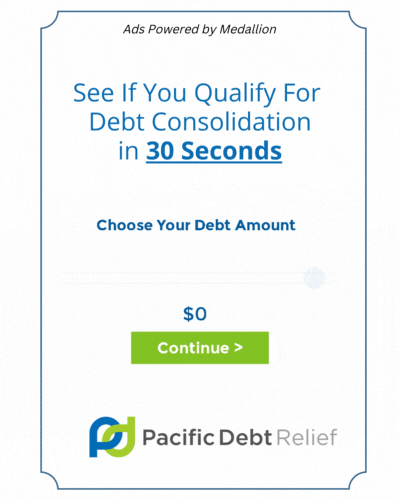High Cost of Living in Hawaii and Its Impact on Personal Debt
Housing Costs
Hawaii is known for its beautiful beaches and stunning landscapes, but living in paradise comes with a high price tag. The housing market here is one of the most expensive in the U.S. Imagine trying to buy a house and finding out the average price on Maui is over a million dollars! Even on the Big Island, which is a bit more affordable, you’re still looking at around $470,000 for a home. And if you’re thinking of renting instead, a small one-bedroom apartment in Honolulu will set you back about $1,600 a month. A lot of this comes down to there not being enough land, lots of people wanting to live here, and building a house costs a lot, too.
Utilities and Living Expenses
Living on an island means most things need to be shipped in, which bumps up the price of pretty much everything. Ever noticed how groceries can feel like luxury shopping? Food costs about 30% more in Hawaii than what most people pay on the mainland. And it’s not just food—utilities like electricity and water are more expensive too because of extra charges for living on an island.
Income Levels
You might think that with everything costing more, people in Hawaii earn a lot more money. But, actually, the average income here is less than in other high-cost states like New York or California. To live comfortably, you’d need to make between $70,000 to $100,000 a year on your own, or between $120,000 to $200,000 for a family. That’s a lot of money, and it makes it hard for many people to stay on top of their debts.
Limited Land Availability and High Demand
One of the big reasons everything is so expensive here is because there’s just not a lot of land to go around, and everyone wants a piece of paradise. This pushes up the prices of homes and means that most of us have to borrow more money to afford living here. And with strict rules on what can be built and where building can get really pricey, adding even more to the cost of a home.
Economic Factors
Hawaii loves its tourists, and a big chunk of our jobs depend on them. But when things like the COVID-19 pandemic happen, or the terrible fires on Maui, it shakes up our economy a lot. With not as many different kinds of jobs available, people can find themselves struggling, especially if they’ve lost work or can’t find enough hours.

Personal Debt Accumulation in Hawaii
Debt Levels
In Hawaii, folks have some of the largest debt piles in the country. Imagine owing on average about $67,010 per person back in 2015. Fast forward to now, and Hawaii families just saw their debts jump by more than a thousand dollars in just one part of 2023. That’s a lot of money people owe compared to the rest of the U.S.
Credit Card Debt
When it comes to credit cards, Hawaiians are also carrying a heavy load with an average debt of $6,343. That’s more than what most people owe on their cards across America. Prices for everything keep going up, but paychecks don’t always catch up. So, many turn to their credit cards to help cover costs, making their debt even higher.
Mortgage Debt
Buying a home in Hawaii is super pricey, leading to a lot of mortgage debt. The average Hawaiian household has about $387,277 to pay off their home. That’s about 77% of all the debt people have here. The dream of owning a home in this paradise means taking on a lot of debt for most folks.
Student Debt
Even though Hawaii isn’t the worst place for student loans, the amount of people who have them has jumped up a lot. The average payment is about $385 a month. From 2004 to 2012, the number of people with student debt went up by 73%, and the amount they owed went up by over 65%.
Managing Hawaii’s High Personal Debt
With debt this high, living in Hawaii can be tough. But there are ways to manage. Places like Pacific Debt help folks by making their debt easier to handle. They can combine all your different debts into one with a lower interest rate, or even talk to the people you owe money to and try to reduce what you have to pay back.
Paying off credit card debt faster by paying more each month, using methods like the snowball or avalanche, or moving the debt to a card with a lower interest rate can also help a lot.
Then there’s planning your budget better and looking for smaller ways to save money, like tax breaks for using solar energy or finding cheaper places to live.
And finally, finding ways to make more money can also ease the burden. This might mean looking for a higher-paying job or finding work that lets you do your job from anywhere, which could pay more.
Living with such high debt in Hawaii is tough but not impossible. With some smart moves and help, people can find ways to make it a bit easier on their wallets.

Strategies for Managing Debt in Hawaii
Debt Consolidation and Settlement Solutions
One way to deal with Hawaii’s high personal debt is through debt consolidation and settling your debts. This can mean putting all your debt together to pay it off with a single, more manageable monthly payment. Or, it might involve talking with those you owe money to and trying to agree on a smaller amount that you can pay back. Companies like Pacific Debt are there to help you with these options. They work with you to find the best way to get your debt under control.
Credit Card Debt Relief
If credit card bills are piling up, there are ways to make things better. For starters, try paying a bit more than the minimum amount due each month. If you can, use the snowball or avalanche methods. They’re all about tackling debts bit by bit or knocking out those with the highest interest rates first. Another good idea is moving your debt to a credit card with lower interest, saving you money in the long haul.
Budgeting and Financial Planning
Getting a grip on your spending is key. Work out a budget that covers all your important costs, like where you live, your utilities, and food. It’s all about making sure you have enough money for what you really need and figuring out where you can cut back to save money. With so many apps and tools out there to help track your spending, it’s easier than ever to keep an eye on where your money is going. This way, you can see where you might be able to save a bit more money to put towards paying down your debt.
Tax-Saving Strategies
Don’t forget about tax-saving possibilities. Hawaii offers tax benefits for using solar energy and other eco-friendly options that could save you money. Also, if you work from home, you might be able to deduct some of your expenses. These savings can then be put towards paying off your debt faster.
Alternative Housing Options and Increasing Income
Another way to help manage your financial situation is by looking at where you live and how you make money. Living somewhere a bit less in demand might save you a lot of money on housing. Sharing a place with others can also help cut down on costs. On the income side, think about looking for a better-paying job or maybe even earning money from a side job or remote work. The more you can bring in, the easier it becomes to manage and pay down your debt.
Living with debt in Hawaii can be tough, but there are ways to make it more manageable. Getting help from a debt consolidation and settlement company, sorting out your budget, and finding ways to save money on taxes are all smart moves. And if you can find cheaper housing or make some extra money, all the better. By taking these steps, you can work towards getting your debt under control and making your financial situation a bit easier to handle.




